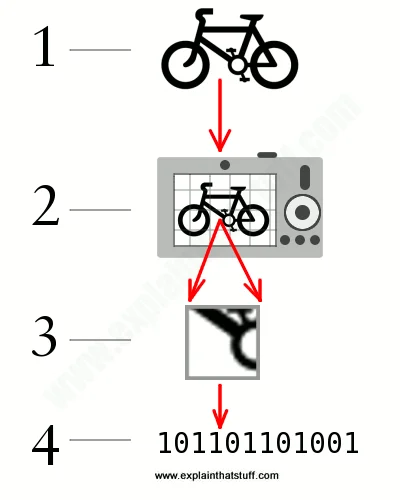How does a web camera work?


A web camera, also known as a webcam, has become an essential tool in today’s digital age. It allows users to communicate visually with others in real-time, making it a popular choice for video conferencing, online streaming, and video chatting. But have you ever wondered how a web camera actually works? In this article, we will delve into the fascinating world of camera technology and explore the inner workings of a web camera.
Understanding Camera Technology
Before we dive into the specifics of how a web camera works, it’s important to have a basic understanding of camera technology. Cameras, whether they are traditional film cameras or digital cameras, all work on the same fundamental principle: capturing light and converting it into an image.
Traditional film cameras use a chemical process to capture and store images on a roll of film. On the other hand, digital cameras, including web cameras, use digital imaging technology to capture and process images.
How Does a Web Camera Work?
A web camera consists of several key components that work together to capture and transmit images. Let’s take a closer look at each of these components and how they contribute to the overall functionality of a web camera.
Image Sensor
The image sensor is the heart of a web camera. It is responsible for capturing the light that enters the camera and converting it into an electrical signal. Most web cameras use either a charge-coupled device (CCD) or a complementary metal-oxide-semiconductor (CMOS) sensor.
CCD sensors are known for their high image quality and sensitivity to light. They use a complex arrangement of capacitors to capture and transfer electrical charges, which are then converted into digital data.
CMOS sensors, on the other hand, are more commonly used in web cameras due to their lower cost and power consumption. They use an array of photodiodes to directly convert light into electrical signals, which are then processed by the camera’s electronics.
Lens
The lens of a web camera plays a crucial role in focusing the incoming light onto the image sensor. It consists of multiple glass elements that help correct distortions and improve image quality. The quality of the lens can greatly impact the overall image sharpness and clarity.
Image Processing
Once the image sensor captures the light and converts it into an electrical signal, the camera’s electronics process the data to create a digital image. This involves various steps, including color correction, noise reduction, and image enhancement.
Web cameras often have built-in software that allows users to adjust settings such as brightness, contrast, and saturation. This software also enables features like face tracking, motion detection, and video effects.
Connection and Transmission
After the image is processed, the web camera needs a way to transmit the data to a computer or other devices. Most web cameras connect to a computer via a USB (Universal Serial Bus) port. The USB connection provides both power and data transfer capabilities.
Once connected, the web camera uses software drivers to communicate with the computer’s operating system. These drivers allow the computer to recognize the web camera as a video input device and enable applications to access the camera’s feed.
Advancements in Web Camera Technology
Over the years, web camera technology has evolved significantly, leading to improved image quality, higher resolutions, and additional features. Here are some notable advancements in web camera technology:
- High-definition (HD) web cameras: These cameras offer superior image quality with resolutions of 720p or 1080p, allowing for clearer and more detailed video.
- Autofocus: Some web cameras feature autofocus capabilities, which automatically adjust the focus to keep the subject sharp and clear.
- Low-light performance: Many web cameras now come with enhanced low-light performance, allowing for better image quality in dimly lit environments.
- Wide-angle lenses: Web cameras with wide-angle lenses provide a broader field of view, making them ideal for group video calls or capturing larger areas.
- Privacy features: To address privacy concerns, some web cameras include physical shutters or LED indicators that can be used to cover or indicate when the camera is in use.
Conclusion
In conclusion, a web camera is a powerful tool that relies on camera technology and digital imaging to capture and transmit images. From the image sensor to the lens, and from image processing to data transmission, each component plays a crucial role in the overall functionality of a web camera. As technology continues to advance, we can expect even more exciting features and improvements in web camera technology, further enhancing our visual communication experiences.
Recent Posts
How do I create an engaging and informative online quiz or assessment?
Creating an engaging and informative online quiz or assessment can be a powerful tool for… Read More
What are the most effective methods for managing and reducing work-related stress in the hospitality industry?
Work-related stress is a common issue in the hospitality industry, where employees often face long… Read More
How can I improve my assertiveness and communication skills in a leadership position?
In a leadership position, assertiveness and effective communication skills are crucial for success. Being able… Read More
What are the key elements of a successful employee recognition and rewards program?
Employee recognition and rewards programs play a crucial role in motivating and engaging employees, as… Read More
How do I effectively manage and respond to customer feedback and reviews?
Customer feedback and online reviews play a crucial role in shaping a company's reputation and… Read More
What are the best strategies for effective time management as a stay-at-home parent?
Effective time management is crucial for stay-at-home parents who juggle multiple responsibilities on a daily… Read More